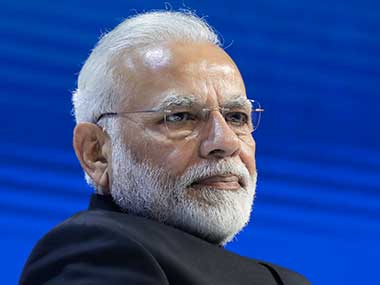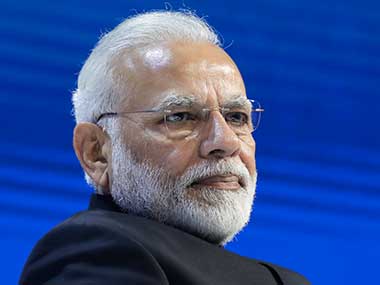The Narendra Modi government’s ham-handed manouvre on “fake news” undermines a serious threat posed by a global menace and weakens its own position on a sensitive topic. The prime minister may have swiftly rolled back Information and Broadcasting Ministry’s proposed move to allay any fears but all that the charade managed to achieve was to fuel the very narrative it sought to dispel. A section of journalists have expectedly latched on to the opportunity to raise the spectre of Emergency 2.0. Congress, author of Indian democracy’s most inglorious moments , chimed in to virtue-signal on free speech. Fake news has been cleverly conflated with media freedom and the fight against fakery has been interpreted as a “hammer blow against journalistic rigour”. What has added to the amusement is that many media mavens who are right now busy shaking in righteous indignation had called for steps against fake news in the past.
Hey @Twitter you need to see the interview by @dhruv_rathee to see how vulnerable your platform is to massive political manipulation and fake news, and how easily political armies can use it to pound dissent and debate into the ground, or how govts can use it for propaganda
— Sagarika Ghose (@sagarikaghose) March 11, 2018
Modi Sarkar's biggest most open most serious assault on the press so far. Until now outsourced to the trolls, now the government moves in to stamp out press freedom https://t.co/Z4bcDmdXvz
— Sagarika Ghose (@sagarikaghose) April 2, 2018
This is hardly exceptional. Such hypocrisies dot our public discourse. Delhi University student Gurmehar Kaur, for instance, who is regularly feted as a “champion of free speech” in media had last year threatened two teenagers with jail and lodged a complaint with the police over a meme that she found “defamatory”. One would have thought a “free speech champion” would show a little more tolerance to criticism. Modi’s move apparently divided the cabal. Some say the prime minister was forced to do it due to an “outpouring of public anger” while some find a more sinister motive of “testing the waters” before a full curb is eventually implemented on journalists in an election year. Some commentators, in turn, called the now withdrawn guidelines an attempt to “ place media organisations at the mercy of trolls, bureaucrats and politicians…” There is no shortage of rhetoric. [caption id=“attachment_4338145” align=“alignleft” width=“380”]  File image of Prime Minister Narendra Modi. AP[/caption] We have travelled down this road before. In the past four years since Modi has moved from Ahmedabad to Delhi, the bogey of “assault on freedom of expression” has been raised once too often under different garbs. This latest outrage is as fake as fake news itself. The BJP, however, continues to bungle in its communications strategy. It does a hell of a job to locate the buried mortal remains of Indians killed by Islamic State but loses the perception battle. It tightens legal procedures in the SC/ST Act but somehow gets painted as anti-Dalit. On the fake news issue, too, the Modi government scored an own goal. The prime minister was constrained to withdraw guidelines that were ambiguous and open to maneuvering. Creating more gatekeepers (even if they are not government-controlled) adds to the problem of fake news which lies firmly in the grey areas of dissemination of information. However, the ‘good cop, bad cop’ routine makes the party appear inconsistent and confused. This is not how policies are formulated. Citizens do not want activism from government. Their mandate is for policy-making that brings consistency and stability. If the government was convinced that fake news menace needs to be tackled, what stopped it from bringing out a draft seeking opinion from key stakeholders? The government did an admirable job on net neutrality. Why couldn’t that model be followed here? Fake news exploits the freedom allowed to media in democracies to spread disinformation that may have a deleterious impact on society. The danger is magnified in a melting pot of different races, faiths, ethnicities and cultures such as India. Consumers of news therefore cannot be allowed to remain vulnerable to exploitation and insidious maneuvering. If news is a content aimed at consumers (wider public), then it must adhere to certain guidelines in providing that content. Adherence to guidelines will never be possible unless journalists are subjected to a modicum of accountability. While questioning those in power, journalists cannot claim to be beyond accountability because such a paradigm presents unfettered power in their hands which they have repeatedly misused. The question is how to make media accountable in a democracy. Self-regulation is the automatic answer but had there been effective self-regulation, the menace of fake news wouldn’t have reared its head. It is no use pretending that fake news is the exclusive preserve of digital platforms affiliated to the BJP, as some media mavens would have you believe. Fake news has been frequently spread by the old media in the past. The fake news on church attacks may have helped AAP sweep the 2015 Delhi Assembly elections. As economist and commentator Rupa Subramanya argued in an article for _Firstpost_ : “While it’s hard to quantify the impact, the church attacks also figured in the recently concluded Delhi Assembly election which swept the AAP and Arvind Kejriwal to a landslide victory. Minority communities, both Muslim and Christian, appear to have heavily favoured the AAP, and church leaders in the recent past have made no secret of the fact that their preferred party was indeed AAP”. She went into great detail to prove that the so-called “church attacks” was an attempt by a section of the media, activists and religious figureheads to join unconnected, random incidents into a spurious narrative against the BJP that was unsupported by facts. This was fake news at its best, and it had a huge impact. The New York Times ran an editorial accusing Modi of wilful silence. Reuters quoted a Christian in India as saying: “We have to raise our voice against the atrocities. Christians will not tolerate this humiliation”. Incidentally, the Reuters story also mentioned the rape of a 75-year-old nun in West Bengal which was initially presented as yet another despicable act by the emboldened Hindu fringe. A retired police officer, a follower of the Christian faith, wrote in a column in The Indian Express stating "suddenly I am a stranger in my own country". Cardinal Baselios Cleemis, the president of an influential Christian organisation in India, referred to the rape of the elderly nun to say “We need to protect not only cows but also human beings” in an article published by The Telegraph. Before the police could complete their investigation into the incident, journalist Rana Ayyub wrote in Daily O: “The attack on the nun is an attack on the entire community who refuses to be cowed down by the diktat of this bunch of terrorists. No, Mohan Bhagwat, these terrorists have not infiltrated from neighbouring Bangladesh. They are our very own demons indoctrinated by the hate for the haraamzadas”. A few months later, a court in Kolkata found a Bangladeshi national guilty of raping the 75-year-old nun. “Five accused, including Nazrul Islam, were found guilty of dacoity at the convent. A sixth person — Gopal Sarkar was found guilty of harbouring the five criminals at his residence”, according to The Indian Express report. And we are led to believe that fake news is peddled only by the likes of the editor of Postcard News, a crime for which Mahesh Hegde has been put in jail by the Congress government in Karnataka. The very Congress which has since accused the Modi government of trying to muzzle media. Fake news exists because journalists who hide under the ruse of “self-regulation” at every attempt to bring accountability have done a shoddy job of self-regulating. Examples abound. Allegations of electronic voting machine tampering were widely reported and the Opposition jumped on to the bandwagon to create another fake narrative. It was later discovered that the entire controversy had erupted over a misreporting of facts. How many reporters were hauled up by the Editors Guild of India, which wants to act as media’s gatekeeper of conscience? Since Modi has called for the issue to be settled only in the Press Council of India, the Guild has insinuated that the government is trying to muzzle media in a roundabout way by undermining the “independence of the institution (PCI) and its ability to play neutral umpire”. The Guild must ask itself: Does it have the right to issue such statements of moral outrage when its own dealings are not transparent and truly representative of the fast changes sweeping across the media space? As R Jagannathan pointed out in a piece for Swarajyamag, the Guild’s “composition is largely a fossilised, old-school elite, as can be seen from the following names associated with it… Starting from the bottom of the list provided by the Guild, as of early 2017 we had “special invitees” like Kuldip Nayar and Mrinal Pande. The former is a 94-year-old journalist whose best days ended in the 1970s during the Emergency. The latter is now a formal member of the Congress ecosystem, having recently been appointed group editor to National Herald, a party mouthpiece”. The writer also points out that the Guild “hardly ever meets” and “does not even meet the basic requirements of an institution”. Having failed to live up to the standards it preaches, the Guild has taken recourse to bluster to maintain its relevance. It needs to do more. The key question remains. Fake news is peddled by journalists of both old and new media for political or ideological reasons. Short of accountability, this menace can never be curbed. If that accountability is not forthcoming from within the institution, then it lowers own credibility and makes itself vulnerable to outside intervention.


)

)
)
)
)
)
)
)
)



